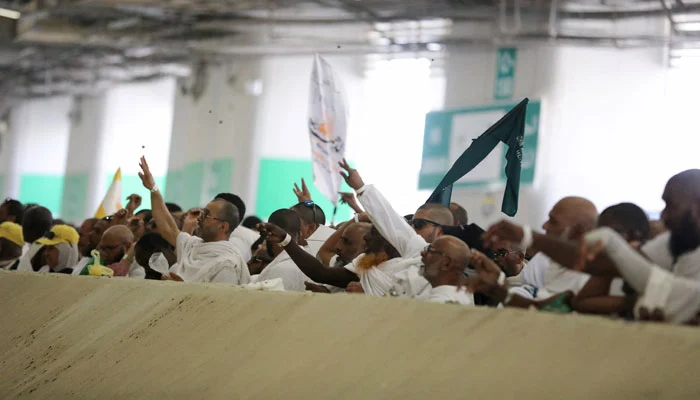Muslim pilgrims performed the final major ritual of Hajj—the “stoning of the devil”—on Friday, as Muslims across the globe simultaneously began celebrating the Eid al-Adha holiday. Starting at dawn, more than 1.6 million Muslims participating in the pilgrimage cast seven stones at each of three concrete walls symbolizing the devil in the Mina valley, located on the outskirts of the holy city of Makkah.
This ritual commemorates Prophet Ibrahim’s act of stoning Satan at the very spots where, according to tradition, the the devil attempted to dissuade him from obeying Allah’s command to sacrifice his son. A day earlier, pilgrims had converged on Mount Arafat, engaging in prayer and reciting Quranic verses at the 70-meter (230-foot) rocky rise near Makkah, where the Holy Prophet Mohammad is believed to have delivered his final sermon.
Many pilgrims ascended the mount despite the scorching heat, although numbers had noticeably thinned by midday following official warnings advising pilgrims to remain indoors between 10:00 AM and 4:00 PM. This year’s Hajj witnessed authorities implementing a range of heat mitigation efforts alongside a comprehensive crackdown on illicit pilgrims. These measures resulted in perceptibly thinner crowds and a strong security presence at holy sites in Makkah and surrounding areas.
The implemented measures aimed to prevent a tragic repetition of last year’s Hajj, which saw 1,301 fatalities in temperatures that soared to 51.8 degrees Celsius (125 degrees Fahrenheit). “Our experience in Mina was easy and simple. We entered and within five minutes we had completed the stoning of the devil at the ‘Jamarat’,” stated 34-year-old Wael Ahmed Abdel Kader, from Egypt, after performing the ritual at dawn.
Howakita, a pilgrim from Guinea, expressed her joy at the prospect of celebrating Eid in Makkah. “When I threw the stones I felt at ease. I was truly proud,” she said.
Saudi authorities reported that a majority of the recorded deaths were among pilgrims who had illegally entered Makkah and thus lacked access to proper accommodation and other essential services designed to ensure pilgrim safety and protection from the intense desert heat. This Hajj season has recorded the lowest number of pilgrims in over three decades, excluding the years of COVID-19 restrictions from 2020-2022. Last year, official figures indicated that 1.8 million Muslims participated in the Hajj.
Hajj permits are allocated to countries on a quota basis and distributed to individuals through a lottery system. However, even for those who manage to secure them, the high costs compel many to attempt the Hajj without a permit, despite the risk of arrest and deportation if caught.
The stoning ritual in the Mina valley was the site of a fatal stampede in 2015, which claimed the lives of 2,300 people in one of the deadliest Hajj disasters in history. Saudi Arabia generates billions of dollars annually from the Hajj and the lesser pilgrimage known as Umrah, undertaken at other times of the year.
The conclusion of the Hajj coincides with the beginning of Eid al-Adha—an annual feasting holiday characterized by the ritual slaughter of an animal, typically a goat, sheep, cow, bull, or camel.



